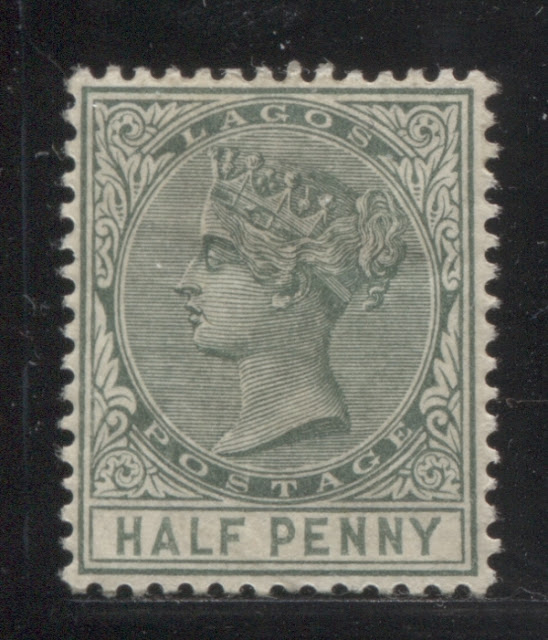Printings of the 1/2d Green and 1d Carmine Queen Victoria Keyplate Stamps of Lagos 1887-1904 Part Two

Today's post will launch right into an examination of the printings of the 1/2d green and 1d carmine Queen Victoria keyplate stamps that were made from the first state of the plate. By my reckoning in last week's post, it was my opinion that each of these denominations should have had approximately 12 printings each, made between March 1887 and either December 1889 or January 1890. So the starting point in identifying these is to look through my many mint and used examples for stamps that were clearly printed from the first state of the plate. As stated in all my previous posts, the first state of the plate is characterized by the almost complete lack of wear in the design, and by the following characteristics: Generally speaking, the horizontal shading lines in the background of the portrait medallion, will all be clearly separated from the other lines, and will be more or less the same thickness, from the top of the medallion, to the bottom. All of the hairlines in t


